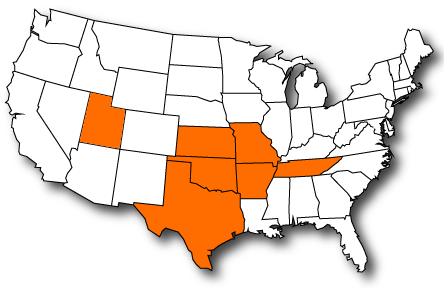Filing a home insurance claim in Little Rock, Arkansas, involves several steps to ensure that you receive the compensation you need to repair or replace damaged property.
This process can be complex, but by following a structured approach, you can navigate it more easily and effectively. Here’s a comprehensive guide to help you through each stage of filing a home insurance claim in Little Rock.
Understanding Your Home Insurance Policy
Before filing a claim, it’s crucial to understand the details of your home insurance policy. Policies typically cover damage from events such as fire, theft, vandalism, and certain natural disasters. However, coverage details can vary significantly, so you need to know what is included and excluded in your policy in Little Rock.

Key Policy Elements
- Coverage Limits: These are the maximum amounts your insurance company will pay for different types of claims.
- Deductibles: This is the amount you must pay out-of-pocket before your insurance kicks in.
- Exclusions: These are specific events or damages that are not covered by your policy.
Step-by-Step Process for Filing a Claim in Little Rock, AR
Immediate Response and Safety Measures
- Ensure Safety: Your safety and that of your family are the top priority. If the damage is severe, such as from a fire or a natural disaster, make sure everyone is safe and accounted for.
- Prevent Further Damage: Take steps to prevent further damage to your property if it is safe to do so. This could include boarding up broken windows, tarping a damaged roof, or turning off water in the event of a burst pipe.
Document the Damage
- Photographs and Videos: Take clear, detailed photos and videos of all the damage. This visual evidence will be crucial for your claim.
- Written Inventory: Make a detailed list of all damaged items, including descriptions, approximate values, and purchase dates if possible.
- Keep Damaged Items: Do not throw away damaged items until the insurance adjuster has inspected them unless they pose a safety hazard.
Contact Your Insurance Company
- Report the Claim: Contact your insurance company as soon as possible to report the damage. Most insurers have a dedicated claims hotline or online portal for this purpose.
- Provide Initial Information: Be ready to provide basic information about the damage, including when and how it occurred, and any immediate actions you’ve taken.
Meet with the Insurance Adjuster
- Schedule an Inspection: Your insurance company will send an adjuster to inspect the damage. Be present during this inspection to mention all damages and provide any necessary documentation.
- Provide Documentation: Give the adjuster copies of your photos, videos, and inventory list. The more thorough your documentation, the easier it will be to substantiate your claim.
Estimates and Repairs
- Obtain Repair Estimates: Get written estimates from reputable contractors for the cost of repairs. Your insurance company may require multiple estimates.
- Temporary Repairs: Make any necessary temporary repairs to prevent further damage, keeping all receipts for reimbursement.
- Approval from Insurer: Wait for the insurance company to approve the estimates before proceeding with major repairs.
Settlement Process
- Claim Evaluation: The insurance company will evaluate your claim, considering the adjuster’s report, your documentation, and the repair estimates.
- Receive Payment: Once the claim is approved, you will receive a settlement payment. This may come in stages, especially if the repair work is extensive.
- Review the Settlement: Ensure the settlement amount is fair and covers all necessary repairs. If you disagree with the settlement, you have the right to negotiate or dispute the decision.
Completing Repairs
- Hire Contractors: Use the settlement funds to hire contractors and complete the necessary repairs.
- Keep Records: Maintain detailed records of all repairs and expenses, including receipts and contracts.
Tips for a Smooth Claims Process
- Maintain Up-to-Date Records: Keep an updated home inventory, including photos, videos, and receipts, stored in a safe place.
- Understand Your Policy: Regularly review your insurance policy to ensure you understand your coverage and limits.
- Prompt Communication: Communicate promptly with your insurance company and contractors to avoid delays.
- Professional Assistance: Consider hiring a public adjuster if you need help negotiating your claim. Public adjusters work for you, not the insurance company.
Dealing with Common Challenges
Disputed Claims
If your insurance company disputes your claim or offers a lower settlement than expected, you can:
- Request a Re-Evaluation: Ask for a second inspection or provide additional evidence to support your claim.
- Hire a Public Adjuster: A public adjuster can help you negotiate with the insurance company.
- File a Complaint: If negotiations fail, you can file a complaint with the Arkansas Insurance Department.
Denied Claims
If your claim is denied, review the denial letter carefully to understand the reason. Common reasons for denial include:
- Exclusions: The damage is not covered under your policy.
- Policy Lapses: Your policy was not active at the time of the damage.
- Insufficient Documentation: Lack of evidence to support your claim.
You can appeal a denial by providing additional evidence or seeking legal advice if necessary.
Preventing Future Damage
After dealing with a home insurance claim, consider taking steps to prevent future damage and potentially lower your insurance premiums:
- Install Safety Features: Smoke detectors, security systems, and storm shutters can help protect your home and may qualify you for discounts.
- Regular Maintenance: Perform regular maintenance on your home to address potential issues before they become major problems.
- Update Your Policy: Ensure your insurance policy is updated to reflect any changes to your home, such as renovations or the addition of high-value items.
Little Rock, AR Specific Considerations
Weather-Related Claims
Little Rock is prone to certain weather-related events that can impact home insurance claims:
- Tornadoes: Tornadoes are a common threat in Arkansas. Ensure your policy covers wind damage and know the specific steps for filing claims related to tornadoes.
- Flooding: While standard home insurance policies typically do not cover flood damage, you can purchase separate flood insurance through the National Flood Insurance Program (NFIP). If your home is in a flood-prone area, consider this additional coverage.
- Hailstorms: Hail can cause significant damage to roofs and exteriors. Document hail damage carefully and be prepared for an inspection.
Local Resources and Assistance
- Arkansas Insurance Department: This state agency can assist if you have issues with your insurance company or need to file a complaint.
- Local Contractors: Use reputable local contractors who are familiar with the types of damage common in Little Rock.
- Community Support: In the event of widespread disasters, local community organizations and government agencies often provide additional support and resources.
Conclusion
Filing a home insurance claim in Little Rock, Arkansas, requires a methodical approach to ensure you receive the compensation needed to restore your home. By understanding your policy, documenting damage thoroughly, and communicating effectively with your insurance company, you can navigate the claims process more smoothly.
Additionally, being aware of local considerations and resources can help you address specific challenges related to weather events and other local factors. With careful preparation and attention to detail, you can manage your home insurance claim effectively and protect your home from future risks.
We at G&G Independent Insurance are here to help make your home insurance claim process easier. Get a free quote now!


